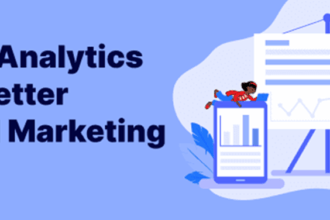It’s no secret that everything businesses need to grow and accomplish their vision is theirs for the taking. But like anything that yields powerful results, the process doesn’t come easy. This describes the dilemma many organizations are facing when it comes to getting insights out of data.
But before enterprises can shore up their analytics processes, they need to understand what’s holding them back.
Audit the state of your company’s analytics infrastructure with these six questions.
How long does it take to deliver information to users?
In any analytics program, the goal is to collect raw data and turn it into interpretable information. Of course, many steps must happen in between collection and insight, but the length of time that it takes is the difference between being a reactive and proactive company. It’s also probably the determining factor for gaining an edge over competitors.
Do you have the right architecture?
Just because data is abundant, doesn’t mean certain data sets aren’t sensitive. Companies collect all sorts of information and make sure it has the right architecture. At the same time, data needs to be accessed by relevant team members without delays or inaccuracies. Businesses need to lay out a centralized governance framework that defines procedures, roles, and responsibilities related to how data is transmitted throughout the organization.
This is no easy feat, which is why many enterprises are leveraging artificial intelligence architecture like ThoughtSpot for data analytics, ensuring a single version of the truth, access at scale, and custom permissions down to specific data rows.
Can the business interpret and communicate about data?
Innovations and operation-changing developments are rarely borne out of a vacuum. If they were, we wouldn’t need to be physically present at work. So, while collaboration is integral to making important decisions and fostering new ideas, a baseline needs to exist for productive discussions to occur. This is why it’s essential to develop a data literate culture. A company could do everything right, but if the data team is the only business unit fluent in data analysis and terminologies, it’ll have a hard time getting value.
Have company leaders bought into data?
This is more of a follow-up question than a standalone one. If employees across the workplace don’t possess a shared knowledge of how to interact with data, the reason is likely because leadership has failed to set a proper example. C-suite members like the Chief Data Officer and Data Evangelist need to work with the analytics team to demonstrate the importance of using data regularly. This doesn’t just mean rhetoric (though that’s important, too), but also a data lexicon and agreed-upon set of KPIs that align with overall business goals.
How is data stored?
Collecting a lot of data is a prerequisite to uncovering important insights. But the ever-growing amount of raw information in existence, and the many forms it comes in, makes data storage an intimidating initiative to solve. In the old days of business intelligence, companies had to buy on-premises hardware if they wanted to collect more data. This was costly, time-consuming, and inflexible, but being the only option, it worked. Now that we have the cloud, however, there’s no reason to opt for an on-premises-only strategy. Agile companies are using multi-cloud or hybrid cloud storage methods to keep their growing data volumes tidy, reducing costs in the process.
Can we tie any positive business outcomes to data?
Here comes the hard but necessary question: Have your analytics efforts meant anything to date? If you’re struggling to come up with use cases, you’re not alone. According to Gartner, 87 percent of organizations have low data and analytics maturity rates. Instead of wallowing in wasted time and money, consider this your organization’s turning point. Take what you’ve learned about the state of your analytics program from the above questions and use it as the blueprint for change.
Audits are never fun, but they are crucial to identifying the needed areas for improvement. Though your efforts may not have yielded much so far, take solace in the fact that analytics programs are never finished; they’re continually evolving and need regular fine-tuning for their full potential to be realized. This is what you’re doing as you audit the state of your analytics infrastructure.









